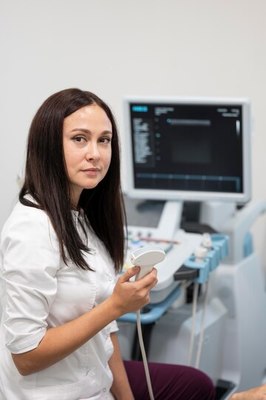
Introduction
In the realm of modern medicine, diagnostic ultrasound radiologists play a pivotal role in providing crucial insights into patient health. Utilizing cutting-edge technology and specialized expertise, these professionals contribute significantly to the diagnosis and treatment of various medical conditions. This article delves into the multifaceted responsibilities, expertise, and impact of diagnostic ultrasound radiologists in healthcare.
Understanding Diagnostic Ultrasound Radiology
Diagnostic ultrasound radiology is a specialized branch of medical imaging that employs high-frequency sound waves to produce real-time images of the internal structures of the body. Unlike other imaging modalities such as X-rays or CT scans, ultrasound imaging is non-invasive and does not involve ionizing radiation, making it safer for patients, especially pregnant women and children.
Role and Responsibilities
1. Image Acquisition and Interpretation: Diagnostic ultrasound radiologists are primarily responsible for acquiring high-quality ultrasound images and interpreting them to identify abnormalities or pathologies within the body. This process requires a keen understanding of anatomy, pathology, and the technical aspects of ultrasound technology.
2. Diagnostic Evaluation: Once the images are obtained, radiologists meticulously analyze them to make accurate diagnoses. They assess various organs and structures, such as the heart, liver, kidneys, and reproductive organs, to detect abnormalities such as tumors, cysts, inflammation, or other anomalies.
3. Guidance for Procedures: Diagnostic ultrasound radiologists often provide real-time guidance for various medical procedures, such as biopsies, injections, and aspirations. By using ultrasound imaging to visualize the targeted area, they enhance the precision and safety of these procedures, minimizing risks and improving patient outcomes.
4. Collaboration with Healthcare Teams: Radiologists collaborate closely with referring physicians, surgeons, and other healthcare professionals to ensure comprehensive patient care. They communicate findings, offer expert recommendations, and contribute valuable insights to the overall management of patients' health conditions.
Expertise and Training
Becoming a proficient diagnostic ultrasound radiologist requires extensive education, training, and specialized skills. Typically, the path to becoming a radiologist follows these steps:
1. Medical School: Radiologists begin their journey by obtaining a medical degree from an accredited medical school, where they undergo comprehensive training in various aspects of medicine and patient care.
2. Residency Training: After completing medical school, aspiring radiologists undergo residency training in diagnostic radiology, which typically lasts for four to five years. During this residency, they receive specialized instruction in ultrasound imaging techniques, interpretation, and clinical correlation.
3. Fellowship (Optional): Some radiologists choose to pursue additional fellowship training in specific subspecialties of diagnostic ultrasound radiology, such as musculoskeletal ultrasound, obstetric ultrasound, or interventional ultrasound. These fellowships provide advanced expertise in a particular area of interest.
4. Board Certification: Upon completing their training, radiologists may seek board certification through examinations conducted by organizations such as the American Board of Radiology (ABR) or the Royal College of Radiologists (RCR). Board certification signifies a radiologist's commitment to excellence and proficiency in the field.
Advanced Technologies and Innovations
The field of diagnostic ultrasound radiology continues to evolve rapidly with advancements in technology and innovations. Some notable developments include:
1. High-Resolution Imaging: Modern ultrasound machines offer unprecedented image resolution, allowing radiologists to visualize anatomical structures with exceptional clarity and detail.
2. Three-Dimensional (3D) and Four-Dimensional (4D) Imaging: Three-dimensional and four-dimensional ultrasound imaging techniques provide volumetric data and real-time visualization of moving structures, offering valuable insights into fetal development, cardiac function, and musculoskeletal anatomy.
3. Contrast-Enhanced Ultrasound: Contrast-enhanced ultrasound (CEUS) involves the administration of microbubble contrast agents to enhance the visibility of blood flow within organs and lesions. This technique enhances the diagnostic accuracy of ultrasound imaging, particularly in assessing vascular abnormalities and liver lesions.
4. Point-of-Care Ultrasound (POCUS): Point-of-care ultrasound is gaining popularity as a bedside diagnostic tool in various clinical settings, including emergency medicine, critical care, and primary care. Radiologists play a crucial role in training healthcare providers in POCUS techniques and interpreting images acquired at the point of care.
Impact on Patient Care
The expertise and contributions of diagnostic ultrasound radiologists have a profound impact on patient care and outcomes:
- Early Detection and Diagnosis: By accurately identifying abnormalities at an early stage, radiologists facilitate timely interventions and treatment, potentially improving patient prognosis and quality of life.
- Precision-Guided Interventions: Ultrasound-guided procedures performed by radiologists enhance the precision and safety of interventions, minimizing risks and complications for patients.
- Personalized Medicine: Radiologists provide personalized diagnostic assessments tailored to each patient's unique clinical presentation, contributing to more individualized treatment approaches and improved therapeutic outcomes.
Conclusion
In conclusion, diagnostic ultrasound radiologists play an indispensable role in modern healthcare, leveraging their expertise and advanced imaging technology to provide accurate diagnoses, guidance for procedures, and valuable insights into patient care. Through continuous education, training, and innovation, these professionals remain at the forefront of medical imaging, driving improvements in diagnostic accuracy, patient safety, and overall healthcare quality.
For healthcare providers seeking expert radiological services and consultation, partnering with experienced diagnostic ultrasound radiologists is essential. Contact us today to learn more about how our team can support your diagnostic imaging needs and enhance patient care.

Leave Comment Below
0 Comment(s)